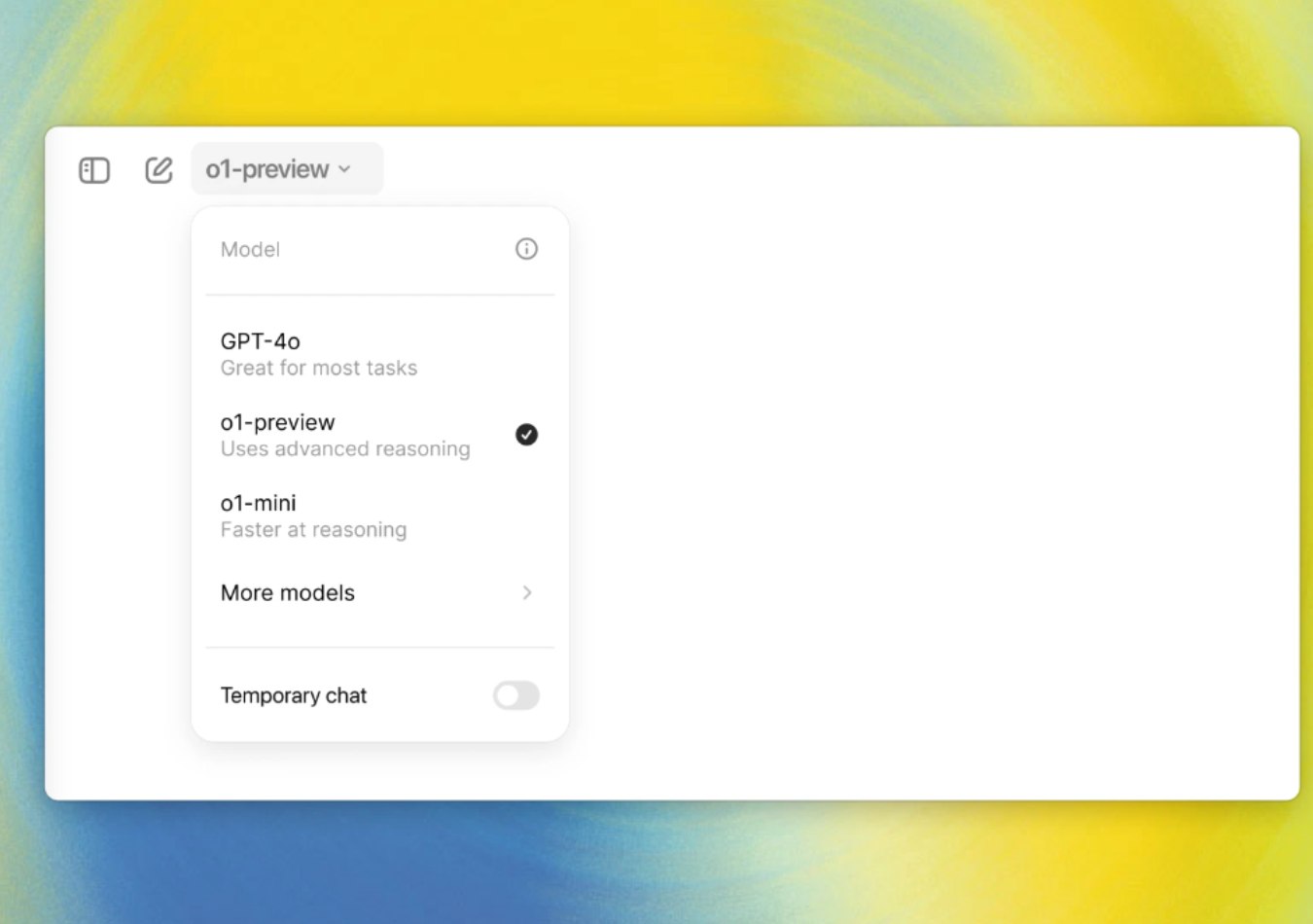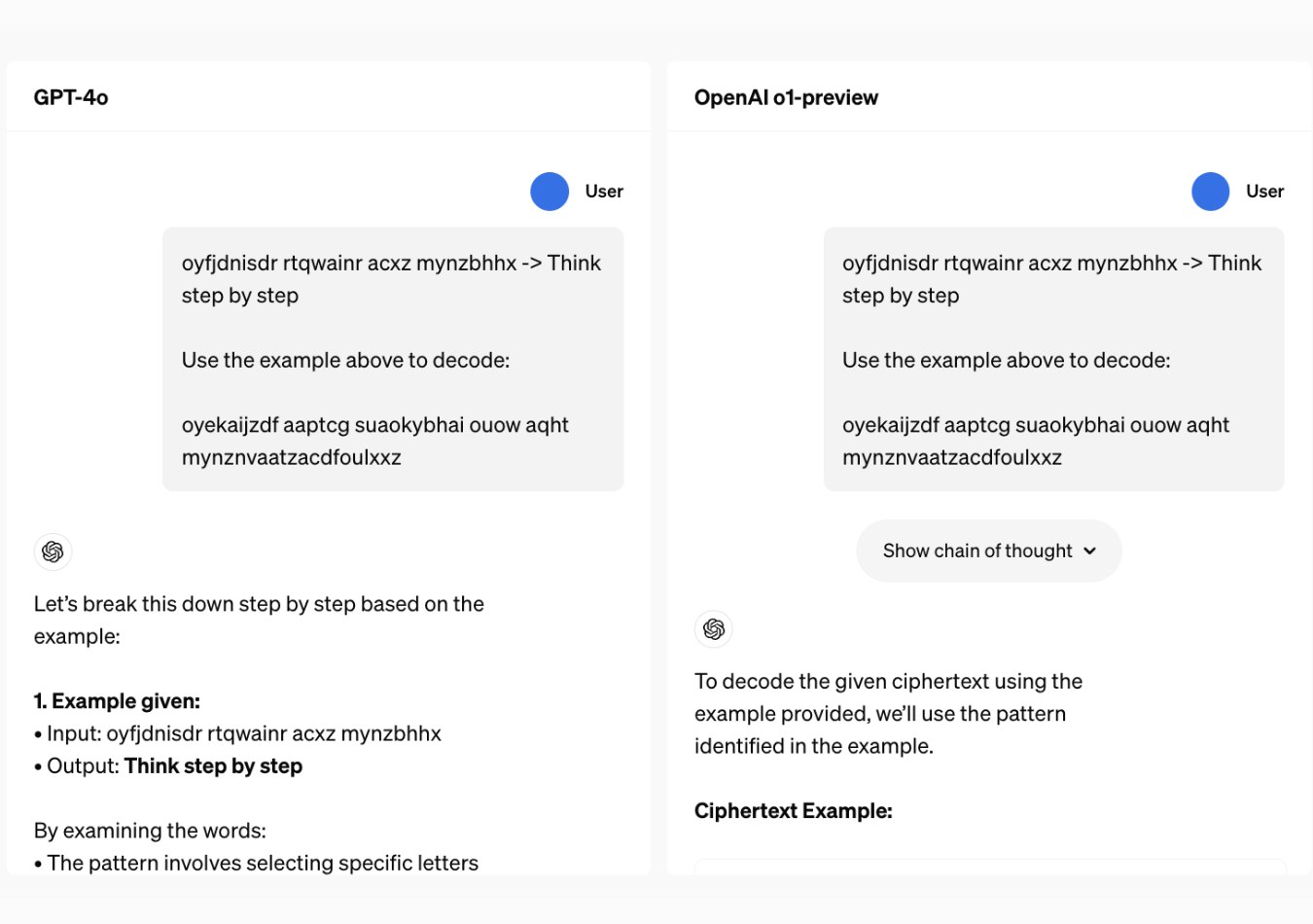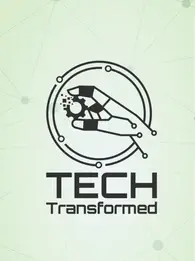
After GPT-4's colossal success, OpenAI is all set to release a new series of AI models with reasoning abilities that it calls – o1.
In a blog post on Thursday (September 13, 2024), OpenAI announced the launch of OpenAI o1, a new large language model that “thinks before it answers.”
The new model is designed to think more deeply before it answers users' prompts and has been trained with reinforcement learning to perform complex reasoning.
OpenAI has released an early version of o1, accessible immediately on ChatGPT and to trusted API users.
The firm claims that OpenAI o1 ranks in the 89th percentile on competitive programming questions (Codeforces).
This places the model among the top 500 students in the US in a qualifier for the USA Math Olympiad (AIME) and exceeds human PhD-level accuracy on a benchmark of physics, biology, and chemistry problems (GPQA).
In the latest updates, OpenAI has further enhanced its reasoning models to be more mindful of the platform's safety policies.
The AI giant revealed using a new method based on "deliberative alignment" that ensures the AI aligns with human developers' values.
Apparently, the method makes o1 "think" about OpenAI's safety policy during inference when a user submits their prompt to the chatbot.
This means that threat actors or adept users may find it hard to get around OpenAI's reasoning models because the questions will be marked as unsafe in case the prompts fall into the company's precarious categories.
The update has also improved o1's abilities to answer benign prompts.
What is o1?
OpenAI o1 is a new large language model (LLM) by OpenAI with reasoning abilities, allowing it to think deeply before providing its users with answers. The model reasons through complex tasks and has been equipped with the capability to solve harder problems than previous models.

Trained with reinforcement learning, o1 can perform complex tasks and produce a long internal chain of thought before responding to the user. OpenAI's large-scale reinforcement learning algorithm trained o1 to process prompts productively through its chain of thought in a highly data-efficient training process.
OpenAI said that the performance of o1 consistently improves with more reinforcement learning (train-time compute) and with more time spent thinking (test-time compute).
“The constraints on scaling this approach differ substantially from those of LLM pretraining, and we are continuing to investigate them,” Sam Altman’s company said.
How does o1 work?
OpenAI o1 trains itself to refine its thinking process via different strategies including recognizing mistakes.
During the testing phase, OpenAI says that the next model update performs similarly to PhD students on challenging benchmark tasks in physics, chemistry, and biology.

Essentially, the smart model solves hard science problems and excels at performing tough maths and coding all by thinking before responding.
It uses a process called reinforcement learning, which means it learns to improve its answers based on feedback. This allows it to reason through complex problems and provide more thoughtful and accurate responses compared to previous AI models.
In a qualifying exam for the International Mathematics Olympiad (IMO), GPT-4o correctly solved only 13% of problems, while the reasoning model scored 83%.
While it may not yet offer all the features of ChatGPT, such as web browsing and file uploading, GPT-4o will likely be more capable of many common tasks soon.
However, for the complex reasoning tasks, OpenAI o1 is a major jump upwards in AI capability. OpenAI says that they are resetting the counter back to 1 and naming this series OpenAI o1.
When will o1 launch?
OpenAI o1 has been launched for preview, available for immediate use on ChatGPT and trusted API users.
The company said that ChatGPT Plus and Team users will be able to access o1 models in ChatGPT starting September 12, 2024. Meanwhile, ChatGPT Enterprise and Edu users will gain access to both models starting next week.
Both o1-preview and o1-mini can be selected manually in the model picker, and at launch, weekly rate limits will be 30 messages for o1-preview and 50 for o1-mini.
OpenAI is currently working to increase those rates and enable ChatGPT to automatically choose the right model for a given prompt.
OpenAI o1 has been made available for developers qualifying for API usage tier 5 immediately, equipping them with the ability to prototype with both models in the API with a rate limit of 20 RPM.
“We’re working to increase these limits after additional testing,” writes OpenAI in the blog post. “The API for these models currently doesn't include function calls, streaming, support for system messages, and other features.”
The company is also planning to make o1 accessible for ChatGPT free users.
What is the difference between O1 and ChatGPT-4?
OpenAI o1 is OpenAI’s new advanced learning language model launched yesterday and ChatGPT-4 came out on March 14, 2024, however, both have different strengths.
OpenAI o1 is designed to excel at complex reasoning tasks. It spends more time thinking before responding, allowing it to solve harder problems and provide more in-depth explanations. It's particularly well-suited for tasks like scientific research, coding, and math.
ChatGPT-4 is a more general-purpose language model that is excellent at a wide range of tasks, including generating creative text formats, translating languages, writing different kinds of creative content, and answering your questions in an informative way. It's often used for customer service, content creation, and general information retrieval.
Overall, GPT-4 is a broad, general-purpose AI model, whereas, o1 is more specialized catering toward scientific tasks like research, coding, and math.












